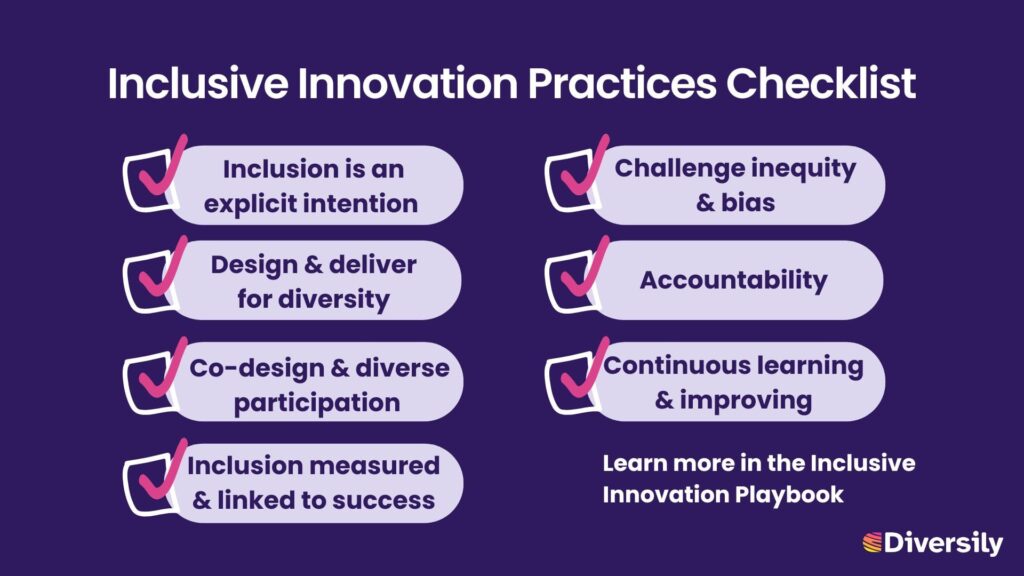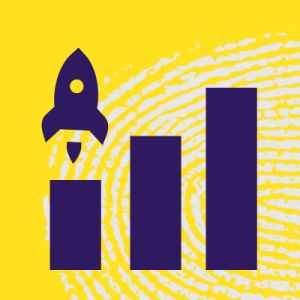Inclusion Isn’t Just a Value. It’s a Practice
A self-reflection guide for product leaders shaping digital experiences
How intentionally inclusive are your product decisions, really?
Most product leaders want to build digital products that work for more people, that are useful, accessible, empowering. Most would say inclusion matters.
But too often, inclusion is treated like a philosophical belief — “Of course we care about everyone” — rather than a deliberate, measurable part of product practice.
If you believe inclusion “just happens” when good people build good products or it’s something that sits within the remit of HR, it might be time for a deeper look.
This article will help you assess where your product team stand and consider what it looks like to embed inclusion as an everyday, intentional practice, not just an aspiration. If you’re ready to lead, work and build differently, or even just curious about how your culture or product practices stack up, this article is a great place to start.
Start here: Would your team pass this quick test?
Ask yourself:
- Do we consistently test with people who are most likely to be excluded, not just the average user?
- Can I name a recent decision where inclusion changed the roadmap or feature design?
- Do our metrics show who benefits and who we might be underserving?
- When we build new features do we ask “Who might this feature not work for?”
- Do we create space for productive disagreement that surfaces honest input from everyone?
To be able to answer ‘yes’ to these questions requires you to take action. Inclusion doesn’t just happen, it requires intentionality.
Inclusion is active
Inclusion isn’t just about beliefs. It’s a capability. And like any capability, it can be learned, practiced, and embedded into how you work.
Inclusion isn’t like breathing. It doesn’t just happen without you thinking about it. It’s more like going to the gym. It requires practice, you can always get better and if you stop doing it, you lose the benefits it brings.
If your goal is to create digital products that are future-ready, user-centred, and sustainable, inclusion isn’t a nice-to-have.
It’s a strategic imperative.
Examine Your Culture
Inclusion is shaped by the environment you create. An inclusive culture is one where everyone is valued and people feel safe to challenge assumptions, contribute diverse perspectives, and shape decisions that affect them.
The following are signs that your team or organisation is leveraging diverse perspectives and cultivating a truly inclusive and psychologically safe culture. Not just saying the right things, but creating the conditions where innovation can thrive.
How many of the following are true for your team?
- We engage in productive disagreement: We surface and value difference and challenge ideas and norms respectfully.
- We speak up and show up: We support others as allies, vocally and visibly, even when it’s uncomfortable.
- We are always learning and unlearning: We never stop learning and take time to reflect and let go of outdated beliefs and norms.
- We own our mistakes: We admit when we’re wrong, reflect, and improve without defensiveness.
- We embrace complexity: We tolerate ambiguity, recognise messy and complex realities and don’t reduce people or problems to binaries.
- We practise radical imagination: We invite divergent perspectives and envision bold possibilities beyond the limits of conventional thinking.
- We acknowledge power: We pay attention to who has a voice, who gets heard, and who doesn’t, and we take action to balance that.
- We see vulnerability as courageous: We create trust by modelling humility and openness.
Take a moment to consider how inclusive your team culture really is
Are these indicators present in your team?
If not, where can you start making change?
Start by asking yourself and your team: What’s one thing we can do differently today to make our culture more inclusive tomorrow?
Examine Your Product Practices
Inclusion doesn’t just happens because a few individuals care, it’s built into how you operate. It shows up in your decisions, your priorities, your processes, and your outcomes. It’s how you design, develop and deliver products that work better for more people.
The following are indicators that your product practices reflect inclusion as a discipline, not just a value.
How many are true for your team?

How many are true for your team?
Use this Inclusive Innovation Practices Checklist to assess how inclusion shows up in what you build and how you build it.
- We have clarity of intent and define principles for inclusive innovation.
We articulate why inclusion matters and define clear principles that guide us to design and create inclusive products.- Why it matters: Without clarity of intent, your efforts may lack focus or direction. Defining inclusive principles ensures that everyone on the team shares the same understanding and vision for inclusion.
- We design and deliver for more than just the ‘default’ user.
Meeting diverse user needs informs our product strategy. We consider the full spectrum of needs and experiences within our target audience at all stages, from ideation & research, to design & testing, to marketing & support. We don’t just bolt on inclusion at the end.- Why it matters: Designing for only the majority means missing out on significant opportunities to serve a broader audience. Ensuring that all users’ needs are considered from the start is key building the right product in the first place, as well as making sure it’s inclusive and accessible.
- We widen participation and encourage co-design & continuous feedback loops.
We actively involve a broad spectrum of people from discovery to delivery, including those who are underrepresented, to inform decisions, and prioritise and shape solutions. This requires inclusive recruitment practices and participatory techniques.- Why it matters: Regular feedback from a diverse range of people ensures that we don’t overlook critical issues and continuously improve our products to serve everyone.
- We ensure inclusion is linked to product success.
Inclusion is embedded as a core element of product success, and we link our metrics to outcomes like usability, retention, and trust across all user groups.- Why it matters: Including inclusion in your product success metrics ensures it’s not a peripheral concern.
- We interrogate our defaults, frameworks, and best practices for bias & inequity.
We regularly question our assumptions, challenge ingrained frameworks, and look for opportunities to make our designs more inclusive by addressing any hidden biases.- Why it matters: Innovation that simply adds diverse voices to a biased system perpetuates exclusion. Unpacking outdated practices and biases enables true transformation.
- We create accountability.
People are responsible for ensuring our products and services are inclusive as part of their role.- Why it matters: Internal accountability ensures that inclusion isn’t left to chance or treated as a side project. It becomes someone’s responsibility, making it a priority across all stages of product development.
- We are committed to ongoing improvement and learning.
We test, learn, and improve inclusion like any other product capability.- Why it matters: True inclusion takes continuous effort. A commitment to learning and improvement ensures that your products evolve with the needs of all users, staying relevant and impactful.
Take a moment to consider how inclusive your products practices really are
Are these indicators part of how you ideate, design, prioritise, and deliver?
Inclusion isn’t an afterthought or a nice-to-have. It’s a capability you build. Start by asking: What’s one product decision we can approach differently this week to make inclusion part of how we operate, not just what we believe?
Why this matters
Inclusive innovation isn’t just “the right thing to do.” It drives better decisions, richer insights, broader market appeal and more sustainable impact. It helps us reach those who’ve been historically overlooked, and build better products for everyone.
It’s not about slowing down. It’s about building smarter, stronger, and more future-ready digital products from the start.
So take a moment now:
👉 What will you stop doing, start doing, or keep doing to embed inclusion more deeply in your work?
👉 What is the biggest obstacle you’ll need to overcome, to grow this practice?
👉 Who will you share this article with so they can join you in making these changes?
Inclusion requires sustained effort — if you haven’t already started, there has never been a better time than now.





